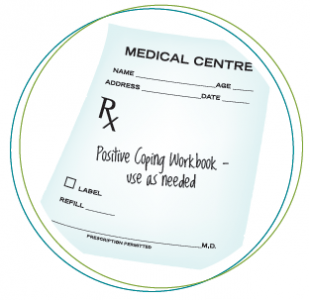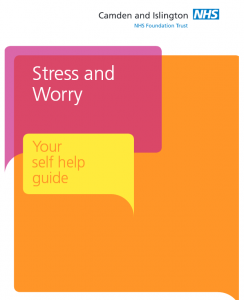Note: you are receiving weekly MoodFx Tips because you subscribed through your MoodFx account at www.MoodFx.ca. To unsubscribe to these Tips and other MoodFx alerts, such as Mood Check and Appointment reminders, simply sign in to your MoodFx account at www.MoodFx.ca and go to the Alerts page. There, you can select whether you wish to subscribe or unsubscribe to any and all notifications. If you are having difficulty, you can also email info@MoodFx.ca for assistance.
Try a self-care strategy for anxiety or stress

Photo credit: Igor Ovsyannykov, stocksnap.io
This week, try using one of these self-care strategies for some immediate relief the next time you feel anxious or stressed out. Or, think of your own idea of an activity you can do to soothe, distract, or support yourself. A list of these kinds of easy, simple self-care activities can serve as your very own self-care toolkit.
Physically pleasant self-care activities:
- take a long, hot bath or shower
- interact with or cuddle a pet
- ask your partner, friend or family member for a shoulder massage
- do some light stretching in an open space of your home, paying attention to how your muscles feel; then curl up on your sofa or bed with blankets and let your body relax
- go for a walk around your neighbourhood or engage in more rigorous cardio exercise, such as jogging or cycling
- spend a few minutes taking in a beautiful or relaxing environment, such a pleasant view or greenspace
Distracting self-care activities:
- watch an engaging TV show or movie
- phone a friend
- pick a small task related to a hobby to work on for five or ten minutes
- Volunteer or find another way to be active in your community; this can also help build a support network and gives you a break from everyday stress.
Self-supporting self-care activities:
- Do your best, and remind yourself that that is enough.
- Accept that you cannot control everything. Put your stress in perspective: Is it really as bad as you think?
MindShift, a free app for Anxiety
If you struggle with anxiety as much as depression, you might benefit from checking out MindShift, a free app provided by Anxiety Canada.
According to the Anxiety Canada website,
“MindShift™ CBT uses scientifically proven strategies based on Cognitive Behavioural Therapy (CBT) to help you learn to relax and be mindful, develop more effective ways of thinking, and use active steps to take charge of your anxiety.”
It provides tools to help you manage:
- Worry
- Panic
- Perfectionism
- Social Anxiety
- Phobias


Screenshots of MindShift CBT from the Anxiety Canada website.
Read more about Mindshift CBT or download the app to your mobile device through the Android and Apple app stores.
Strategies to overcome perfectionism, from AnxietyCanada
Perfectionism–the tendency to hold unrealistically high standards for oneself or others–can be a big source of anxiety. If perfectionism contributes to some of the anxiety you experience, check out this guide from AnxietyCanada to recognizing perfectionism and developing tools and skills to challenging perfectionistic thoughts, feelings, and behaviours. These include:
- realistic thinking
- perspective taking
- considering the big picture
- compromising
- practicing being “imperfect”
- overcoming procrastination

Perfectionists tend to set extremely high standards that are either impossible to meet or that can only be met at great personal cost. Image credit: Angelina Litvin, StockSnap.io
From Worrier to Warrior
Worrying is a common symptom of depression. This week, try the following strategy to help cope with worry.

WORRYING OR INEFFICIENT THINKING
Put your worry to a useful purpose. Rather than going over problems in your head, try picking out one or two that seem really important and make a decision to resolve them. You may like to ask a friend to help you.
Go through the following steps:
- Say exactly what the problem (or goal) is.
- List five or six possible solutions to the problem. Write down any ideas that occur to you, not merely the good ideas.
- Evaluate the good and bad points of each idea in turn.
- Choose the solution that best fits your needs.
- Plan exactly the steps you will take to put the solution into action.
- Review your efforts after attempting to carry out the plan. Praise all efforts. If unsuccessful, start again.
Visit https://thiswayup.org.au/how-do-you-feel/sad/ for more information.
Free Relaxation Method Audio Guide
Previously, we featured tips on progressive muscle relaxation and calm breathing for managing anxiety from the Positive Coping with Health Conditions (PCHC) Self-Care Workbook.
If practicing progressive muscle relaxation and deep breathing on your own is a challenge, check out their free online audio guide to stress-relieving relaxation exercises.
The Relaxation Method Audio Guide is part of the PCHC Self-Care Workbook by Dan Bilsker, PhD, RPsych, Joti Samra, PhD, RPsych, and Elliot Goldner, MD, FRC(P), MHSc, a self-care manual authored by scientist-practitioners with expertise in issues relating to coping with health conditions.
The PCHC workbook is helpful for people dealing with mental as well as physical health conditions and includes sections on well-known positive coping skills, including:
- Relaxation
- Managing Worry
- Activating Your Life
- Solving Problems
- Managing Depressive Thinking
- Managing Anger
- Relationship Building
You can download a copy of the workbook or access it online for free here.
Worry periods, CBT, and mindfulness
Here is a compilation of strategies for managing and calming anxiety from around the web. Don’t forget that it takes time and practice implementing concrete strategies to see the biggest benefits–so don’t be discouraged if something you try doesn’t help right away or completely fix the problem.
From HelpGuide.org – How to Stop Worrying: Self-help Strategies for Anxiety Relief
From the Australian National University Counseling Centre – The 10 best ever anxiety management techniques
From Here to Help – General Self-Help Strategies for Anxiety
Learning to practice progressive muscle relaxation
Our last anxiety tip focused on learning how to introduce a practice of calm breathing. This time, we highlight another instant anxiety reliever, muscle relaxation. According to AnxietyBC, muscle relaxation consists of “learning to relax your body by tensing various muscles and then relaxing them. This strategy can help lower overall tension and stress levels. It also helps you to be more aware of when you are feeling stressed.”
Read the how-to guide at the AnxietyBC website, here.
Helpful hints:
-
Set aside about 15 minutes to complete the exercise.
-
Find a place where you can complete this exercise without being disturbed.
-
For the first week or two, practice this exercise twice a day until you get the hang of it. The better you become at it, the quicker the relaxation response will “kick in” when you really need it!
-
You do not need to be feeling anxious when you practice this exercise. In fact, it is better to first practice it when you are calm. That way, it will be easier to do when feeling anxious.

Learning to practice calm breathing
Learn to practice calm breathing to slow down anxiety with this article from AnxietyCanada (formerly AnxietyBC).
What is “calm breathing”?
Calm breathing (sometimes called “diaphragmatic breathing”) is a technique that helps you slow down your breathing when feeling stressed or anxious. Newborn babies naturally breathe this way, and singers, wind instrument players, and yoga practitioners use this type of breathing.
Why is calm breathing important?
- Our breathing changes when we are feeling anxious. We tend to take short, quick, shallow breaths, or even hyperventilate; this is called “overbreathing”.
- It is a good idea to learn techniques for managing “overbreathing”, because this type of breathing can actually make you feel even more anxious (e.g., due to a racing heart, dizziness, or headaches)
- Calm breathing is a great portable tool that you can use whenever you are feeling anxious. However, it does require some practice.

Learn to recognize (and challenge) unrealistic thoughts

Photo credit: John-Mark Kuznietsov, stocksnap.io
Oftentimes, anxiety is caused and sustained by unrealistic thoughts, also known as distorted thinking. Distorted thinking is common in depression and anxiety. For example, a person who is anxious may unrealistically expect only the worst possible outcome of a situation to occur, often without even realizing it.
One effective and widely-studied strategy for dealing with distorted thinking is cognitive-behavioural therapy (CBT). CBT teaches us how to identify and challenge the kinds of distorted thoughts that can create and sustain anxiety and depression.
Some common distorted thoughts include:
- All-or-nothing thinking – Thinking about things in black-or-white, all-or-nothing terms, with no middle ground. “If I fall short of perfection, I’m a total failure.”
- Overgeneralization – Generalizing from a single negative experience, expecting it to hold true forever. “I didn’t get hired for this job. I’ll never get any job.”
- Mental filter – Focusing on the negatives while ignoring all the positives, including diminishing the positive – Coming up with reasons why positive events don’t count. “I got positive feedback on my last work assignment, but I think my supervisor was just trying to be nice.”
- Jumping to conclusions – Making negative interpretations without actual evidence. You may be a mind reader: “I bet he doesn’t like my work.” Or a fortune teller: “I just know something terrible is going to happen.”
- Personalization – Assuming responsibility for things that are outside your control. “Sales aren’t as high as last year; I must be doing something wrong.”
Although CBT is often practiced with a mental health professional such as a psychiatrist, psychologist, or counsellor, self-guided CBT programs have also been shown to be effective for people with depression and anxiety. There are a variety of self-directed CBT resources available, both in print and online. You can also speak to your family doctor about referrals to counselling programs services providing CBT in your area.
Make plans to get outside and be physically active

Photo credit: Curtis Mac Newton, stocksnap.io
Exercise contributes not only to our physical health, but our mental well-being as well. Many studies have shown that physical activity can help reduce stress and anxiety, both immediately and over the long term with a regular exercise routine.
To get the benefits of exercise, aim for 30 minutes of moderate-intensity activity three to five times a week. Make sure to stick to activities that are appropriate for your fitness level and abilities, which could range from taking a brisk walk to going for a day hike.
If you have any questions or concerns about increasing your activity level, you should also speak to your family doctor.
Read more about the benefits of exercise for anxiety and get further tips from AnxietyBC: Being Active.
Free mood-boosting and anxiety-busting audio guides

Photo credit: Padurariu Alexandru, stocksnap.io
This week, try using one or more of these free, short, mood-boosting and anxiety-busting audio guides, provided by the NHS in the UK. Ranging from 5 to 15 minutes, these short sessions provide simple, commonsense advice on ways you can take action to improve your mood and reduce anxiety. Topics include:
- low mood and depression
- panic attacks
- anxiety
- anxiety control training
- sleep problems
- practical problem solving
- low confidence
- unhelpful thinking
There are many audio guides to walk you through feelings of depression & anxiety available for free online. To ensure the resources and information you find are reliable, consider the source. University health sites, for example, often have great information appropriate for a wide audience. Check out the audio guides from the following university health centres:
- Dartmouth Student Wellness Centre – Relaxation audio
- UCLA Health – Free Guided Meditations
- USC San Diego Health – Audio Guides to Mindfulness-based Stress Reduction
Practical worksheets for managing anxious thoughts, from AnxietyBC
This week, try working through one or more of these anxiety worksheets from AnxietyBC. Worksheets can guide you through implementing some basic and powerful CBT (Cognitive-Behavioral Therapy) concepts that are proven to help lessen anxiety.
Try carrying your worksheet with you in your bag or purse for just one day, and work through each column whenever you become aware that you are feeling anxious. Note that the more you practice, the easier and more effective the exercise will become.
For more worksheets and resources for anxiety self-management, check out all of AnxietyBC’s printable resources.

Audio guides for anxiety management, from AnxietyBC

photo by Martin Vorel, via Stocksnap.io
Putting new skills for anxiety and depression into practice takes time and effort. If you like to learn through audio or listen to podcasts on your commute, check out AnxietyBC’s selection of free, downloadable audio guides for managing anxiety symptoms.
Audios include the In Conversation series, where you can learn more about anxiety from leading experts, as well as downloadable files for calm breathing, mindful body awareness, visualizations, confidence-building exercises, and more. Download one (or all) and add them to your phone or music player so you have easy access when you need it.
You can check them out here.

Solve a problem

Sometimes we worry because it feels like a necessary part of solving a problem. This can certainly be true when our worries are manageable and motivate us to solve a problem.
However, for people with anxiety, these worries usually go a bit too far. Rather than motivating us to solve a tough problem, overly intense and insistent worries can make it harder to face a challenging situation by trapping us in rumination.
Instead of worrying, taking concrete steps to develop and implement a solution to a problem is one of the best ways to alleviate anxiety. Taking action can not only help to solve your problem, but can also make you feel more in control.
This week, try solving a problem in your life, be it a smaller (“I need to organize the paperwork on my desk”) or larger (“I’m feeling lonely and should make new friends” or “I have a deadline approaching and I’m worried I won’t finish in time”) concern.
To help you, you can follow this guide, from AnxietyBC.
For further reading on self-help strategies for generalized worry and anxiety, check out this guide.

Top Ten tips for anxiety
Australian National University has a helpful page describing their top ten tips for managing anxiety. Each tip falls into one of 3 categories of how to manage the different aspects of anxiety:
- body
- mind
- behaviours
Check out their top ten here–and maybe try compiling your own list of strategies that work best for you.

Getting outside into the beauty of nature works well for us! Photo credit: Annie Spratt, StockSnap.io
Cognitive-behavioral and other strategies for challenging anxiety
This week, check out this guide to using cognitive-behavioral self-help strategies to challenge anxious thoughts, feelings, and behaviors: https://www.ntu.ac.uk/student_services/document_uploads/107734.pdf
The guide takes you through techniques we’ve shared in other MoodFx tips, such as challenging biased thoughts, deep breathing, and progressive muscle relaxation.
Check out the rest of the guide for more information about anxiety, strategies to manage anxious feelings and behaviors, and recommendations for further reading.
Work through this free self-help guide to Stress and Worry
This week, check out this simple but comprehensive Stress and Worry self-help guide developed and provided by the UK’s National Health Service Foundation Trust.
The workbook includes helpful sections you can read and work through at your own pace and compiles many of the helpful strategies we’ve featured here, including a stress and worry diary, tips for “balancing” the stress equation by reducing demands and increasing your ability to cope, and sections dedicated to problem solving, time management, and reducing physical symptoms and managing troublesome thoughts.
A simple, short, step-by-step introduction to managing anxiety, from AnxietyBC
If you have anxiety, be it part of a depression, a separate anxiety condition such as social anxiety or OCD, or general everyday anxiety, AnxietyBC is an excellent resource for you.
This week, check out their self-help resources for general and specific troubles with anxiety.
For those with mild-to-moderate generalized anxiety, including what might be part of a depression, check out My Anxiety Plan (MAP) to learn and practice basic self-management.
For those of you with a suspected or known anxiety condition, check out their section of resources for 7 different anxiety disorders.

AnxietyBC is a non-profit organization based in British Columbia, Canada, whose mission is to increase awareness about anxiety disorders; promote education of the general public, affected persons, and health care providers; and to increase access to evidence-based resources and treatments.
Try using worry scripts to lessen anxious thoughts over time
Last month, we shared information and resources on worry diaries, which can help you to identify your anxious thoughts. This week, you can learn to lessen those anxious thoughts with worry scripts.
From AnxietyBC:
Worry scripts are a helpful tool for managing your excessive worries. This skill is most useful for worries about hypothetical situations over which you have little to no control. Examples of these types of worries include:
- Worries about you or a loved one developing a serious illness
- Worries about you or a loved one being in an accident, getting injured, abducted, or killed
- Worries about failure or loss in your future (e.g., losing your job, getting divorced)
These worries take up a lot of time and energy, and they probably cause you a great deal of anxiety.
In general, the best way to get over fears is to face the fear through gradual exposure. The problem is that although this kind of exposure is very helpful for getting over a fear of dogs, for example, it is not very useful when your fear is of a negative event in the future that has not happened, and may never happen.
In this case, the best way to deal with your worries is to write a worry script. It is similar to a journal or diary entry, where you write out in great detail your worst fear every day for about two weeks.
Note that to get the benefits of a worry script, you do have to commit to working on it daily; half an hour every day over two weeks is recommended. You can wait until you have the energy and motivation to undertake this task–it doesn’t have to be right away, but when you feel ready to try this strategy.
For the step-by-step guide through this process care of AnxietyBC, click here.

Keep a worry diary

Photo credit: Luis Llerena, stocksnap.io
One of the first steps in managing anxiety is learning to identify the specific situations that trigger your anxious thoughts and feelings. Because anxiety can often make it seem like lots of things are going wrong, taking a few moments to focus in and clarify what exactly is making you anxious can be tremendously helpful. Identifying the source of your worries is also the first step in problem-solving, a powerful, proactive and long-term strategy for alleviating anxiety.
One of the best ways to identify and clarify anxiety triggers is to write anxious thoughts down. Writing helps us keep track of what’s bothering us–especially when our minds are abuzz with anxious thoughts–so we can pinpoint the root sources of our worry.
To this end, try keeping a worry diary, a small notebook or pad of paper in which you can jot down any and all anxious thoughts whenever they occur. Once you’ve written them out, review your list and try to identify the root problem(s) that are the cause of your anxious thoughts.
For more information about how to keep a worry diary and get the most out of this practice, check out the following free resources:
Online article, How to Gain Control of Worry and Anxiety – Use a Worry Diary to Challenge Your Worries and Feel Better
Printable Worry Diary worksheet from Anxiety BC.
Stress and Worry Guide .pdf booklet



